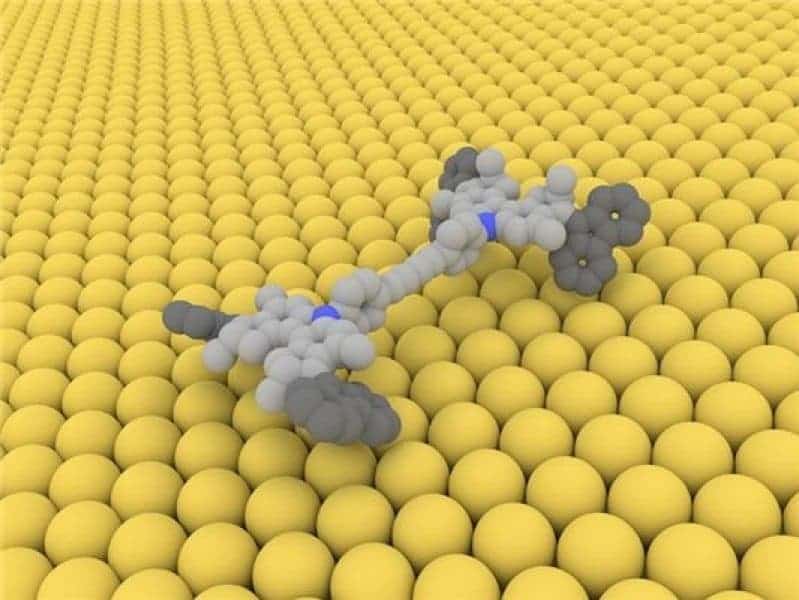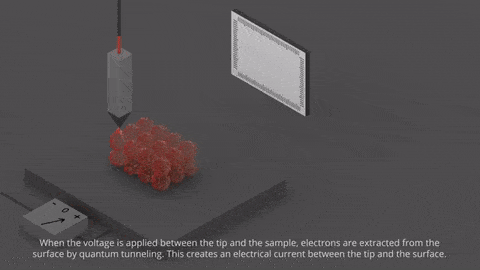This April, Toulouse, France will be host to the world’s first international molecule-car race. The vehicles will be made up of only a few atoms and rely on tiny electrical pulses to power them through the 36-hour race.

Image courtesy of Ben Feringa.
Races did wonders for the automotive industry. Vying for renown and that one second better lap time, engineers and drivers have pushed the limits of their cars farther and farther. Seeing the boon competition proved to be for the development of science and technology in pursuit of better performance, the French National Center for Scientific Research (Centre national de la recherche scientifique / CNRS) is taking racing to a whole new level — the molecular level.
From April 28th to the 29th, six international teams will compete in Toulouse, France, in a 36-hour long nanocar race. The vehicles will only be comprised of a few atoms and powered by light electrical impulses while they navigate a 100-nanometer racecourse made up of gold atoms.
The fast (relative to size) and sciency
The event is, first of all, an engineering and scientific challenge. The organizers hope to promote research into the creation, control, and observation of nanomachines through the competition. Such devices show great promise for future applications, where their small size and nimbleness would allow them to work individually or in groups for a huge range of industries — from building regular-sized machines or atom-by-atom recycling to medical applications, nanomachines could prove invaluable in the future. It’s such a hot topic in science that last year’s Nobel Prize for chemistry was awarded for discovering how to make more advanced parts for these machines.
But right now, nanomachines are kind of crude. Like really tiny Model T’s. To nudge researchers into improving this class of devices, the CNRS began the NanoCarsRace experiment back in 2013. It’s the brainchild of the center’s senior researcher Christian Joachim, who’s now director of the race, and Université Toulouse III – Paul Sabatier Professor of Chemistry Gwénaël Rapenne, both of whom have spent the last four years making sure everything is ready and equitable for the big event.
Some challenges they’ve faced were selecting the racecourse — which must accommodate all types of molecule-cars — and finding a way for participants to actually see their machines in action. Since witnessing a race so small unfurl could prove beyond the limitations of the human eye, the vehicles will compete under the four tips of a unique tunneling microscope housed at the CNRS’s Centre d’élaboration de matériaux et d’études structurales (CEMES) in Toulouse. It’s currently the only microscope in the world allowing four different experimenters to work on the same surface.


The teams have also been hard at work, facing several challenges. Beyond the difficulty of monitoring and putting together working devices only atoms in size, they also had to meet several design criteria such as limitations on molecular structures and form of propulsion. At the scale they’re working on, the distinction between physics and chemistry starts to blur. Atoms aren’t the things axles or rivets are made of — they’re the actual axles and rivets. So the researchers-turned-race-enthusiasts will likely be treading on novel ground for both of these fields of science, advancing our knowledge of the very-very-small.
Out of the initial nine teams which applied for the race before the deadline in May 2016, six were selected for the race. Four of them will go under the microscope on April 28th. The race is about scientific pursuit, but it’s also an undeniably cool event — so CNRS will be broadcasting it live on the YouTube Nanocar Race channel.
[panel style=”panel-info” title=”The rules of the race” footer=””]The race course will consist of a 20 nm stretch followed by one 45° turn, a 30 nm stretch followed by one 45° turn, and a final 20 nm dash — for a total of 100 nm.
Maximum duration of 36h.
The teams are allowed one change of their race cars in case of accidents.
Pushing another racecar a la Mario Kart is forbidden.
Each team is allotted one sector of the gold course.
A maximum of 6 hours are allowed before the race so each team can clean its portion of the course.
No tip changes will be allowed during the race.[/panel]






